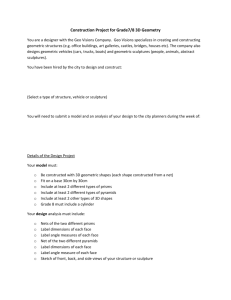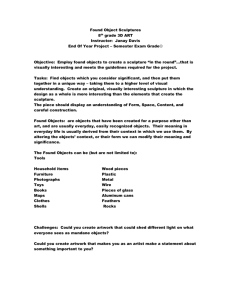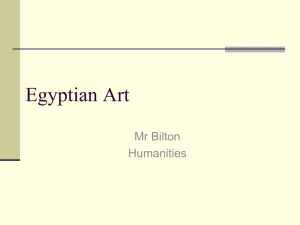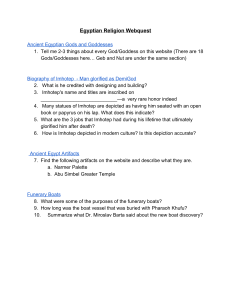Egyptian Art Notes - McCray Art
advertisement
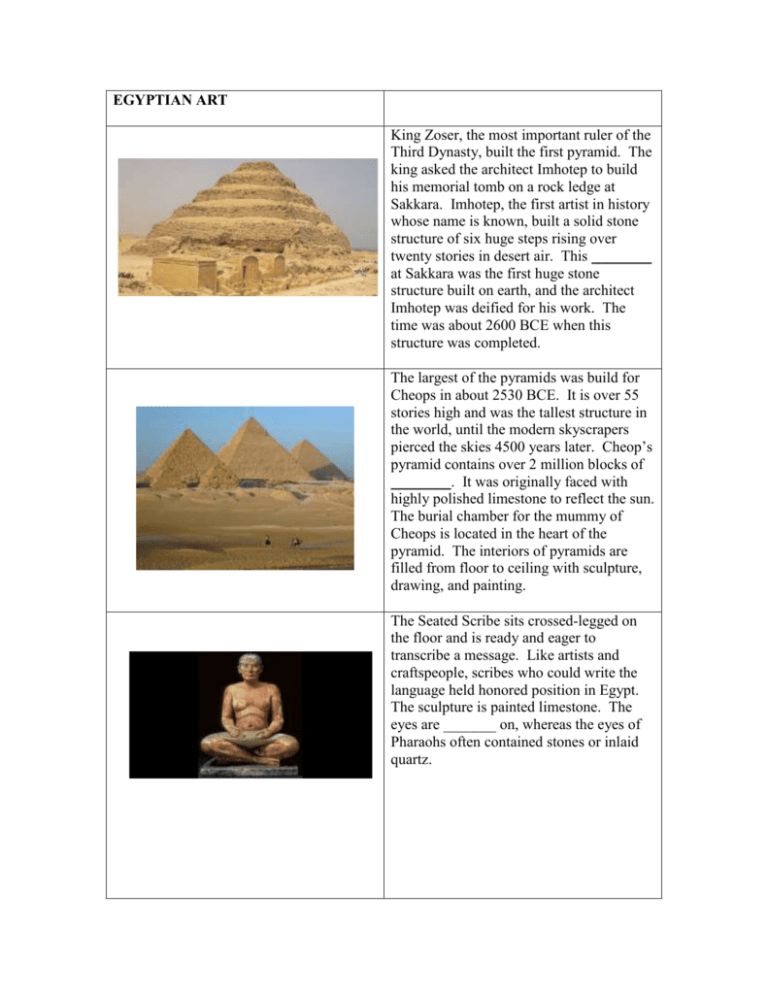
EGYPTIAN ART King Zoser, the most important ruler of the Third Dynasty, built the first pyramid. The king asked the architect Imhotep to build his memorial tomb on a rock ledge at Sakkara. Imhotep, the first artist in history whose name is known, built a solid stone structure of six huge steps rising over twenty stories in desert air. This ________ at Sakkara was the first huge stone structure built on earth, and the architect Imhotep was deified for his work. The time was about 2600 BCE when this structure was completed. The largest of the pyramids was build for Cheops in about 2530 BCE. It is over 55 stories high and was the tallest structure in the world, until the modern skyscrapers pierced the skies 4500 years later. Cheop’s pyramid contains over 2 million blocks of ________. It was originally faced with highly polished limestone to reflect the sun. The burial chamber for the mummy of Cheops is located in the heart of the pyramid. The interiors of pyramids are filled from floor to ceiling with sculpture, drawing, and painting. The Seated Scribe sits crossed-legged on the floor and is ready and eager to transcribe a message. Like artists and craftspeople, scribes who could write the language held honored position in Egypt. The sculpture is painted limestone. The eyes are _______ on, whereas the eyes of Pharaohs often contained stones or inlaid quartz. The Old Kingdom (about 2700 BCE): The statues unearthed in and near the Great Pyramids are of three types: ______________. The carving of Mycerinus and His Queen was cut from a single block of slate. The figures are stylized and formal in appearance. Arms are rigid, faces look straight ahead, and each left foot is slightly forward. Their pose is called _______ because both figures are facing and looking straight ahead. Although the faces are sculpted to represent some of the individual features of the king and queen, the bodies are _______. They are ideal bodies and not accurate depictions of the king and queen. The New Kingdom (about 1500 BCE): As well as building huge temples and complexes, other art forms were produced. The Greenfield Papyrus uses registers (layers) to place figures. Many of the gods are in the form of animals. The figures are shown so that the arms, legs and faces are in ________, but the upper body is turned to the viewer. The face is in profile, but the eye looks directly at the viewer. Descriptive perspective is also used. In descriptive perspective the more important figures are shown _____ than the less important ones. The careful design and placement of figures to fill almost all the available space is characteristic of Egyptian paintings and wall sculpture. Stylization characterizes most of Egypt’s art; however, there was a time during the New Kingdom when there was a realistic approach to art. The sculpture of the Pharoah’s wife, Nefertiti, is a superb example of this realism. This sculpture shows knowledge of the structure of the human head. Artists at times took molds from human faces and bodies to study structure and anatomy. Yet some stylization is still evident here, such as the ______ (overly long) neck.







